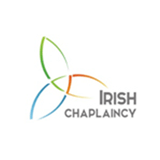St John the Baptist celebrations in Irish
June 21, 2019 Blog
The evening of June 23, St John's Eve, is the eve of celebration before the Feast Day of St John the Baptist. The bible states that John was born about six months before Jesus, therefore the feast of John the Baptist was fixed on June 24, six months before Christmas. St John the Baptist, like Jesus and the Blessed Virgin Mary, is one of very few persons to have the anniversary of the birth commemorated.
The Feast of St John coincides with the June solstice also referred to as Midsummer. The feast is celebrated in many countries throughout the Christian world. In Ireland this was the traditional night for the Bonfire. In this celebratory bonfire old bones were burned. In the Irish language the bonfire is called "Tine Cnáimh" which literally means fire of bones. Another name for the fire was "Tine Féil Eóin".
Traditionally, for several days prior to the feast day, children and young people went from house to house asking for donations for the blessed fire. It was considered very unlucky to refuse. At some fires, the names of generous donors were called out and the crowd would cheer. The names of those who refused donations were also announced and these were greeted with jeers and catcalls.
The celebratory fire was lit as the sun was setting and had to be watched and tended until long after midnight. Prayers use to be said to obtain God's blessing on the crops, then at the peak-point of summer bloom.
In many places, the older people continued the preliminary proceedings with more prayers. Afterwards, the merry-making began. As the flames and sparks shot up, loud cheers would arise from the crowd, horns were blown and some people beat on tin cans. The musicians struck up and the young men asked their partners to dance. In-between sets, songs were sung; stories were told, and soloists - musician or dancer - demonstrated their talents.
By now the fire would be well ablaze. People leapt through the flames for luck in a new endeavour, or marriage, when trying for a baby, for good health and for self-purification. Farmers leapt high so their crops would grow tall. In many places, a young woman and man would join hands and jump together. Onlookers took it for granted that there was some intention of marriage between the pair. Some observers would even go as far as to predicting the outcome of such a union by the way the flames flickered as the couple jumped!
Some people used to take the ashes from the fire then extinct on St. John's morning to scatter them on their fields. At the close of the festival too about after midnight any man who had built a new house or had nearly completed it took from the bonfire a shovel of red hot sods to his new home so that the very first fire there would be started by the ceremonial bonfire.
Thomas Flanagan in his book "The Year of the French" refers to the traditional Bonfire in Killala, Co Mayo:
"Soon it would be Saint John's Eve. Wood for the bonfire had already been piled high upon Steeple Hill, and when the night came there would be bonfires on every hill from there to Downpatrick Head. There would be dancing and games in the open air, and young men would try their bravery leaping through the flames. There would even be young girls leaping through, for it was helpful in the search of a husband to leap through a Saint John's Eve fire, the fires of midsummer. The sun was at its highest then, and the fires spoke to it, calling it down upon the crops. It was the turning point of the year, and the air was vibrant with spirits."
The first fires of new homes were kindled from the bonfire. Fires lit from the bonfire were lit around houses to keep fairies away. Items were burned so as to inflict loss on an enemy. Fires were both communal and individual. Bonfires were so large that tall ladders were required for their construction.. There was competition to have the biggest and best fire. The fires were lit during the recitation of a prayer:
"In the honour of God and of St. John, to the fruitfulness and profit of our planting and our work, in the name of the Father and of the Son and of the Holy Spirit, Amen".
Walking sunwise around the fire while praying was considered essential. Youths would toss burning sticks up into the air. Sometimes effigies were tossed on the fire. Food including a special dish called "goody" made of white shop bread soaked in milk and flavoured with sugar and spice was made in Iron pots by the side of the fire.
The tradition of burning bonfire's on the eve of St John the Baptist is no longer celebrated in Ireland as it was in the past. When I was growing up it was still common for elderly people to sit and share memories of the celebrations and of the customs that were part and particle of their youth. Maybe you spend some time with elderly Irish people and ask them how they celebrated the feast of the St John the Baptist in their youth. You might consider becoming a volunteer with the Irish Chaplaincy Seniors Project. You would be very welcome to be part of our team.

